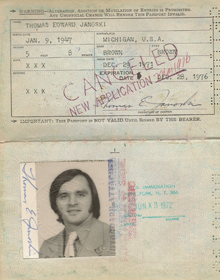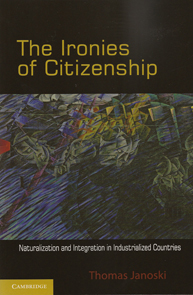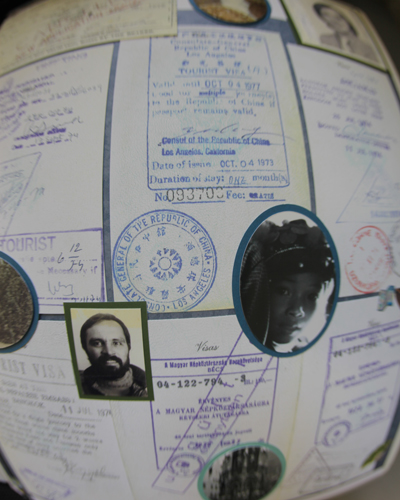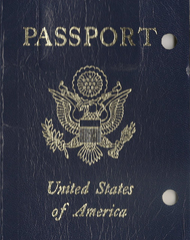By Rebekah Tilley
In 1973, Thomas Janoski was living out of backpack in India getting desperate for money. A fellow traveler told him he could sell his well-worn American passport for around $500, though if he were British he could get $1000.
 Why in the world would a British passport be worth twice what an American passport is worth?” Janoski asked then. “At the time you could get into any country in the Commonwealth of Nations with a British passport. That episode peaked my interest in terms of passports as a symbol of citizenship.”
Why in the world would a British passport be worth twice what an American passport is worth?” Janoski asked then. “At the time you could get into any country in the Commonwealth of Nations with a British passport. That episode peaked my interest in terms of passports as a symbol of citizenship.”
In his recently released book from Cambridge University Press, “The Ironies of Citizenship,” Janoski wipes the theoretical slate clean and takes a comprehensive methodological approach to understanding what leads industrialized countries to integrate and naturalize immigrants.
“It’s basically the idea that citizenship – who can become a citizen – is wrapped into fundamental state interest. Are you backing up the state? Or are you threatening the state in some sort of way,” Janoski explained. “Over centuries, countries develop regime types toward strangers and as a result of this they come up with very different kinds of institutional arraignments concerning who can be a citizen and who can’t.”
 This is a departure from previous theories that suggested naturalization rates were rooted in deep-seated cultural values, and had little or nothing to do with state interest. Through his exhaustive research that examines countries over centuries combined with a 36-year time-series analysis, Janoski developed cascading theories – two different theories where the second theory is built into the first – that explain how regime types and political leadership are the primary determinants of a nation’s naturalization rates.
This is a departure from previous theories that suggested naturalization rates were rooted in deep-seated cultural values, and had little or nothing to do with state interest. Through his exhaustive research that examines countries over centuries combined with a 36-year time-series analysis, Janoski developed cascading theories – two different theories where the second theory is built into the first – that explain how regime types and political leadership are the primary determinants of a nation’s naturalization rates.
In case studies that examined countries over centuries, Janoski identified four different regime types that had distinct approaches to granting citizenship: colonizers, settlers counties, non-colonizers and Nordic countries. Answers to why Janoski’s American passport was worth half as much as a British passport are as simple as looking at the history of the United States of America and the British empire.
Over the course of 100 plus years of colonizing rule in places like India, Australia and Jamaica, the British were able to convert their subjects and integrate them through tools such as education and the extension of rights; the greatest being citizenship. As British power on a global scale faded in the twentieth century, citizenship became a useful tool in the hands of the state to attempt to keep the old empire together.
“The British ended up giving passports to half the world,” said Janoski. “By 1947 and earlier in other places, residents of Jamaica or India, had the right to migrate to Britain as citizens – all in an effort to keep their empire together and get important leaders cooped to certain degree.”

Travel collage by Laura Jannika
As a settler country, America needed people and they came in waves over hundreds of years from various points around the globe. Just like in Canada, New Zealand and Australia, immigrants were integrated and naturalized, and their children obtained citizenship as a birthright.
Not so for non-colonizer counties. “In this case the state has no reason to naturalize immigrants because they don’t need or want immigrants,” Janoski explained. Thus second and third generation Turks living in Germany often do not have German citizenship because “the non-colonizer – namely Germany – looks at immigrants and says, ‘Well you know we may need you for a while, but after you’re done doing what we need you to do, you’ll go back because we don’t really need you to be citizens,’” Janoski said.
Armed with this understanding of regime history over centuries and with a grant from the National Science Foundation, Janoski assembled a massive data set that measured nationalization laws in eighteen countries based on twelve characteristics spanning 36 years. Using a pooled, cross-sectional time-series analysis, he found powerful evidence that left party power has a direct impact on naturalization rates and this effect is independent of any changes in naturalization laws.
This is surprising in part because left-leaning political parties are not universally pro-immigration because labor groups typically makes up a significant percentage of the party, and immigration creates competition for jobs.
“But this whole book isn’t about immigration, it’s about naturalization,” Janoski said. “These people are already in the country. They’re potential voters. They’re people who are probably members of these unions already. So consequently, it’s the difference between ‘Should we let people in?’ versUS ‘Should we give these people the rights that citizens subsequently have?’ So left parties are definitely interested.”
Then it should not be too surprising to find that leftist parties would pass laws easing the naturalization process, and thus the law itself would lead to an increase in naturalization rates. Yet Janoski’s quantitative analysis found a much stronger link.
 “When you do the regression analysis, left party power has a direct impact on naturalization rates independent of the laws that they themselves have created. Which is a very powerful statement. You control for this obvious thing that should explain absolutely everything, yet you still see left party power has a strong impact beyond the naturalization laws.”
“When you do the regression analysis, left party power has a direct impact on naturalization rates independent of the laws that they themselves have created. Which is a very powerful statement. You control for this obvious thing that should explain absolutely everything, yet you still see left party power has a strong impact beyond the naturalization laws.”
Janoski’s unique methodological approach best accounts for an effect that moves at a glacial pace, yet has a profound impact overtime. This includes the impact that a small blue and gold embossed booklet representing citizenship has for 262,856,643 native born and naturalized Americans worldwide.
Images courtesy of Thomas Janoski
